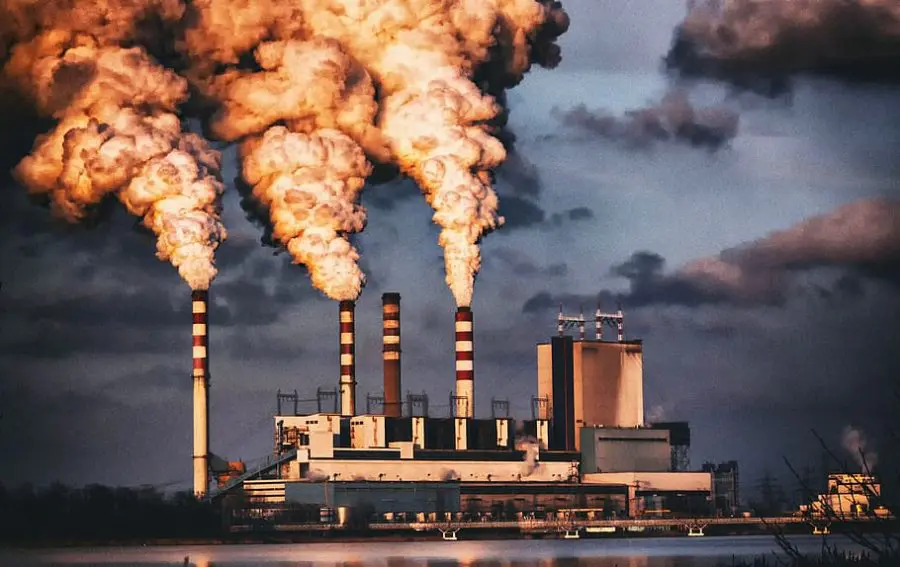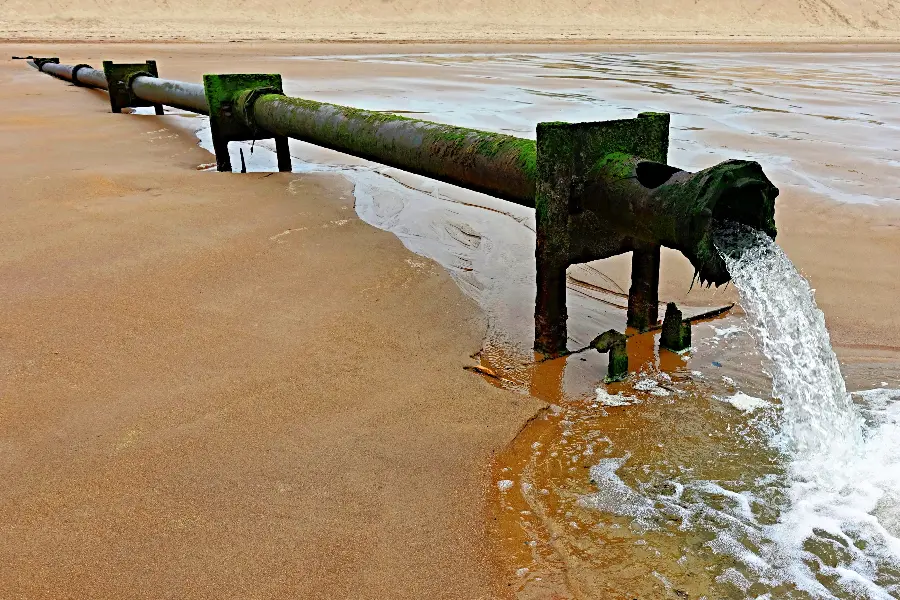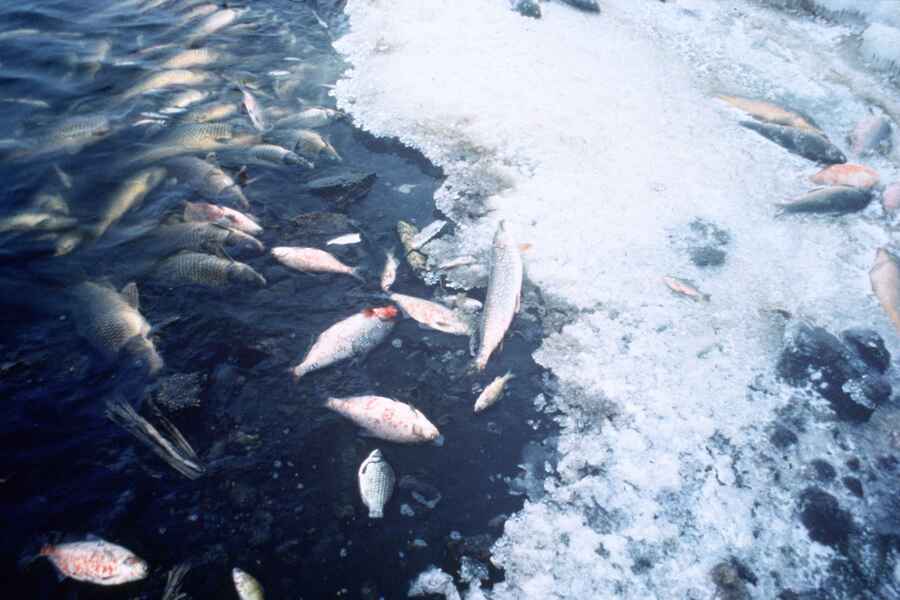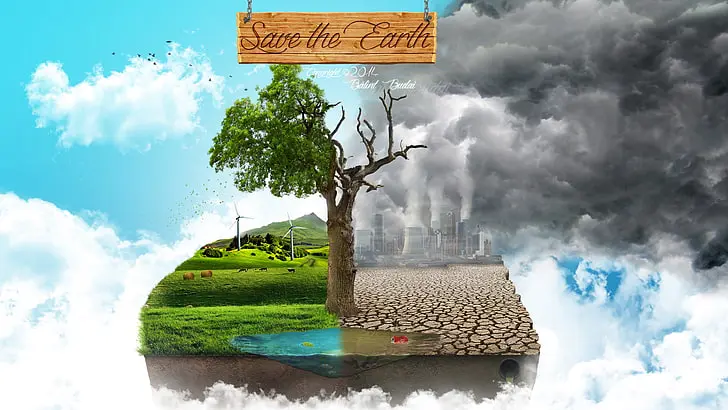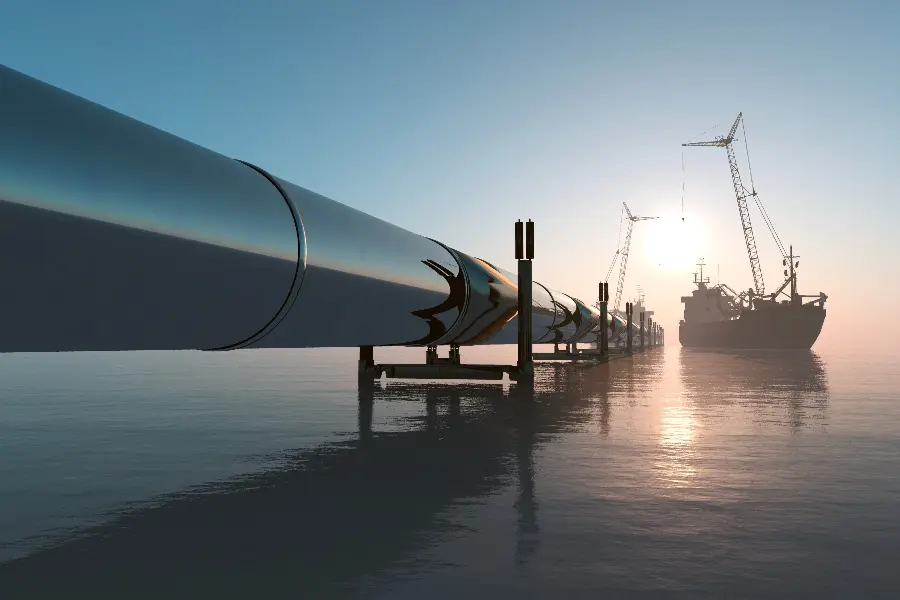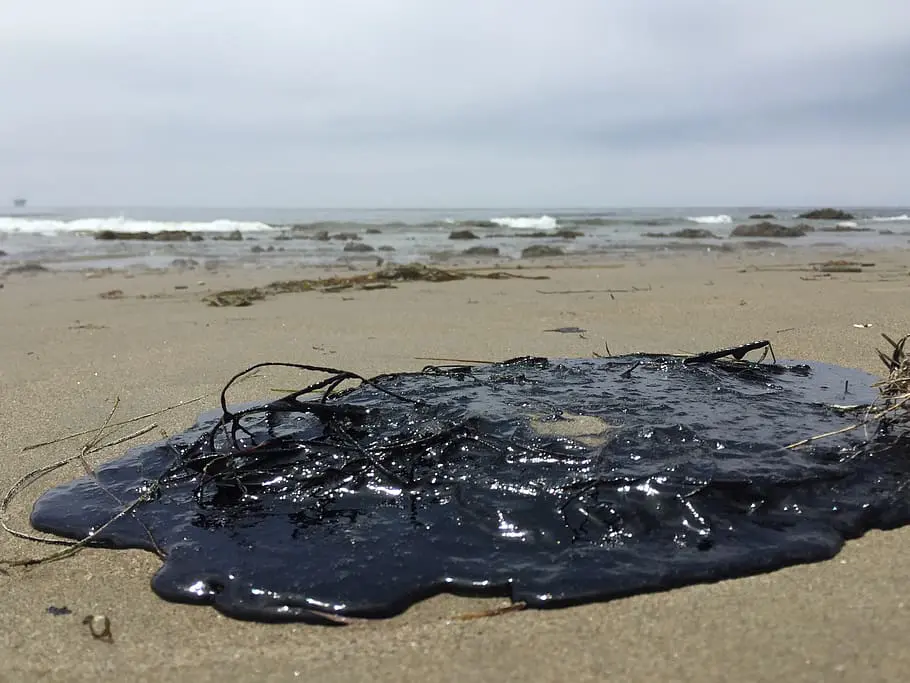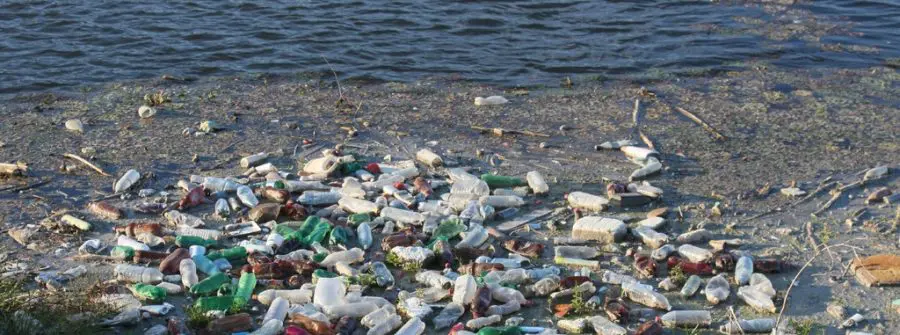
Discover what are sources of water pollution in our everyday life. Join us as we explore the causes and impacts, and how we can make a difference together.
Ever wondered, what are the sources of water pollution? Well, you’re not alone.
It’s a question that’s on many minds as we all strive to understand our impact on the planet.
From the food we eat to the products we use, our daily choices can contribute to water pollution in ways we might not even realize.
In this article, we’ll dive deep into the major sources of water pollution, shedding light on this pressing issue and exploring how we can all play a part in the solution.
So, let’s embark on this enlightening journey together!
What are Sources of Water Pollution?
Welcome! Today, we’re tackling a topic that affects us all: What are the sources of water pollution? It’s a big question, and the answers might surprise you.
We’ll be exploring everything from agriculture to industrial waste, and even the products we use in our own homes.
But we won’t stop at identifying the problems. We’ll also delve into the impacts of these pollutants on our health and the environment, and discuss practical solutions we can all implement.
So, if you’ve ever wondered how you can make a difference in the fight against water pollution, stick around. This post is for you!
Definition of Water Pollution
Let’s start at the beginning, shall we? When we talk about water pollution, what exactly do we mean?
In simple terms, water pollution occurs when harmful substances, often chemicals or microorganisms, contaminate a body of water.
This could be a stream, a river, a lake, or even the ocean. These contaminants degrade the quality of the water, making it harmful, and sometimes even toxic, to humans and the environment.
It’s like when you’re about to enjoy a refreshing glass of water, and someone drops a bit of ink into it.
Suddenly, that clear, inviting glass of water doesn’t seem so appealing, right?
Importance of Understanding Sources of Water Pollution
Now, you might be wondering, Why is it so important to understand the sources of water pollution?
Well, think of it like this: if your sink was overflowing, you wouldn’t just start mopping up the water without first turning off the tap, would you?
In the same way, if we want to tackle water pollution effectively, we need to understand where it’s coming from.
By identifying the sources, we can work on reducing or even eliminating them, and prevent further damage to our precious water resources.
Plus, understanding the sources of water pollution can help us make more informed decisions in our daily lives, from the products we buy to the way we dispose of waste.
So, in a way, we’re all part of the solution!
Major Sources of Water Pollution
Alright, now that we’ve got a handle on what water pollution is and why it’s crucial to understand its sources, let’s dive into the heart of the matter.
We’re about to embark on a journey exploring the major sources of water pollution.
From the fields of agriculture to the depths of industrial waste, and even right into our own homes, we’ll uncover how these sources contribute to the pollution of our precious water resources.
It’s a bit like being detectives, piecing together the clues to solve the mystery of water pollution. So, grab your magnifying glass, and let’s get started!
1. Agriculture
Let’s start with agriculture, a field that’s closer to our daily lives than we might think. Agriculture is a major player when it comes to water pollution, and here’s why:
Use of Fertilizers and Pesticides: Picture a lush, green farm, with crops reaching for the sky. It’s beautiful, right?
But to keep those crops healthy and pest-free, farmers often use fertilizers and pesticides.
When it rains, these substances can wash into nearby water bodies, leading to an excess of nutrients like nitrogen and phosphorus.
This can cause algal blooms that harm aquatic life and make the water unsafe for us.
Livestock Waste: Now, imagine a farm full of cows or chickens. These animals produce a lot of waste, which can contaminate water bodies if not managed properly.
This waste can introduce harmful bacteria and viruses into our water, posing a risk to both human health and the environment.
2. Industrial Waste
Next up, we have industrial waste. Factories and manufacturing plants often produce waste that can be harmful if it enters our water systems.
Discharge from Factories: Many factories discharge wastewater into rivers and oceans.
This wastewater can contain harmful substances like heavy metals and toxic chemicals.
Without proper treatment, these contaminants can harm aquatic life and make the water unsafe for human use.
3. Mining Activities
Mining is another significant source of water pollution. The process of extracting minerals from the earth can lead to the release of harmful substances.
These can contaminate groundwater and surface water, posing risks to both the environment and human health.
4. Domestic Waste
Now, let’s bring it closer to home. Domestic waste, which includes sewage and wastewater, as well as household chemicals, can also contribute to water pollution.
Sewage and Wastewater: Every time we flush the toilet, take a shower, or wash our dishes, we produce wastewater.
If this wastewater isn’t treated properly before it’s discharged, it can contaminate our water with harmful bacteria and other pollutants.
Household Chemicals: Many of us use chemicals every day, from cleaning products to personal care items.
When we wash these substances down the drain, they can end up in our water systems.
Urban Runoff: In cities, rain can wash everything from litter to oil into storm drains, which often lead directly to rivers and oceans. This urban runoff can contribute to water pollution.
5. Fossil Fuels
Fossil fuels, including emissions from power plants and oil spills, are another major source of water pollution.
Emissions from Power Plants: Power plants that burn fossil fuels can release harmful substances into the air. When it rains, these substances can fall back to earth and enter our water systems.
Oil Spills: Large oil spills, like the ones we often see in the news, can have devastating effects on aquatic life.
But smaller, more regular spills and leaks can also contribute to water pollution.
6. Solid Waste
Improper disposal of solid waste, including plastic pollution, is another major source of water pollution.
Improper Disposal of Waste: When we don’t dispose of our waste properly, it can end up in our water systems.
This includes everything from litter on the street to illegal dumping of industrial waste.
7. Plastic Pollution
Plastic is a major problem when it comes to water pollution. It doesn’t break down easily, and it can harm aquatic life that mistakes it for food. Plus, plastic can carry other pollutants into our water.
So, as you can see, the sources of water pollution are varied and complex.
But by understanding them, we can start to find ways to reduce our impact and protect our water resources.
Impact of Water Pollution
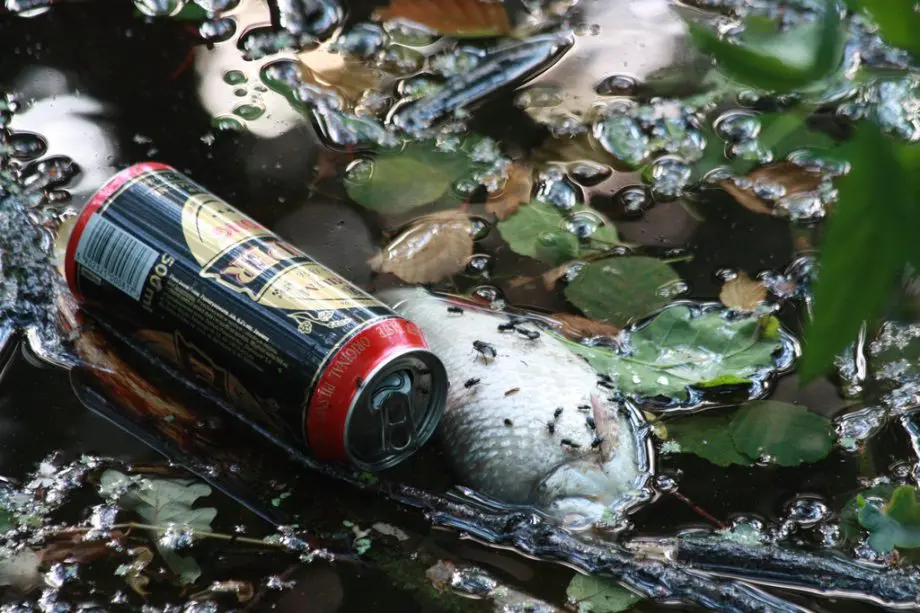
Having explored the major sources of water pollution, it’s time to delve into the impacts. It’s a bit like watching the dominoes fall, isn’t it?
Once our water sources are polluted, the effects ripple out, touching everything from the smallest microorganisms to entire ecosystems, and yes, even us humans.
In this section, we’ll explore how water pollution affects aquatic life, human health, and even our economies.
It’s a sobering look at the consequences of our actions, but remember, knowledge is power.
By understanding the impacts, we’re better equipped to make changes. So, let’s dive in and uncover the true cost of water pollution.
Effects on Aquatic Life
First up, let’s talk about our friends in the water. Fish, plants, and microorganisms. They all feel the effects of water pollution.
When harmful substances enter their habitat, they can disrupt the delicate balance of their ecosystem.
For instance, an excess of nutrients from agricultural runoff can cause algal blooms.
While algae might seem harmless, too much of it can deplete the water’s oxygen levels, making it difficult for other aquatic life to survive.
It’s like trying to breathe in a room that’s slowly running out of air!
Then there’s the issue of toxins. Many pollutants, like heavy metals and industrial chemicals, are toxic to aquatic life.
These toxins can accumulate in the bodies of aquatic organisms, affecting their growth, reproduction, and even survival.
It’s a bit like living with a ticking time bomb in your body.
Impact on Human Health
Now, let’s turn the spotlight on us humans. We might not live in the water, but water pollution affects us all the same.
Many of us rely on water bodies for our drinking water. When these sources are polluted, it can lead to a range of health issues.
For instance, bacteria and viruses from untreated sewage can cause diseases like cholera and typhoid.
And toxins from industrial waste can lead to long-term health problems like cancer and neurological disorders.
Water pollution can also affect the food we eat. Remember how toxins can accumulate in aquatic organisms?
When we eat contaminated fish or shellfish, we can ingest these toxins, too.
Economic Consequences
Finally, let’s talk about the economic consequences of water pollution.
It might not be the first thing that comes to mind, but the impact on our wallets can be significant.
Cleaning up polluted water sources can be costly. These costs can fall on governments, businesses, and ultimately, taxpayers.
Water pollution can also affect industries that rely on clean water, like tourism and fishing.
When a beach is closed due to pollution or a fishery is contaminated, it can lead to job losses and economic downturns in these sectors.
So, as you can see, the impacts of water pollution are far-reaching.
But by understanding these consequences, we can better appreciate the importance of protecting our water resources.
Preventive Measures and Solutions
Now that we’ve explored the sources and impacts of water pollution, you might be feeling a bit overwhelmed.
But don’t worry, it’s not all doom and gloom!
Just like any problem, water pollution has solutions, and that’s what we’re going to dive into next.
From wastewater treatment to sustainable farming, there are many ways we can reduce water pollution and its impacts.
And the best part? Many of these solutions are things we can start implementing in our own lives today.
So, let’s roll up our sleeves and explore the preventive measures and solutions that can help us protect our precious water resources.
Wastewater Treatment
First on our list of solutions is wastewater treatment. This is a process that removes contaminants from wastewater before it’s released back into the environment.
Wastewater treatment plants use a combination of physical, chemical, and biological processes to clean the water.
It’s a bit like giving the water a thorough bath before it goes back into our rivers and oceans!
But wastewater treatment isn’t just about cleaning water. It’s also about reusing it.
Many places are now using treated wastewater for things like irrigation and industrial processes.
It’s a great way to conserve our water resources and reduce pollution at the same time.
Sustainable Farming Practices
Next up, we have sustainable farming practices. These are methods that aim to reduce the environmental impact of agriculture.
For instance, farmers can use organic fertilizers and pesticides instead of synthetic ones.
These natural alternatives are less likely to contribute to water pollution.
Farmers can also implement practices like crop rotation and cover cropping.
These methods improve soil health, reducing the need for fertilizers and helping to prevent runoff.
Proper Waste Disposal
Proper waste disposal is another key solution to water pollution.
This means not dumping waste into water bodies or storm drains.
It also means disposing of household chemicals and other potentially harmful substances properly, so they don’t end up in our water.
Recycling is another important aspect of waste disposal. By recycling items like plastic bottles and bags, we can reduce the amount of waste that ends up in our water.
Use of Renewable Energy
Last but not least, we have the use of renewable energy.
By switching to renewable energy sources like wind and solar, we can reduce our reliance on fossil fuels.
This means less air pollution, which can lead to less water pollution.
Renewable energy is also a more sustainable choice for the future. Unlike fossil fuels, renewable energy sources won’t run out.
Plus, they don’t contribute to climate change, which can exacerbate water pollution.
So, as you can see, there are many ways we can tackle water pollution.
It’s all about making conscious choices and taking small steps towards a cleaner, healthier planet.
FAQs
By now, we’ve covered a lot of ground on our journey through the world of water pollution.
But perhaps you still have some questions bubbling up. That’s great! Asking questions is how we learn and grow.
In this next section, we’re going to tackle some frequently asked questions about water pollution.
From the most common sources to the ways it affects us and what we can do about it, we’ve got you covered.
So, if you’ve been wondering about any of these topics, read on. Your answers await!
Q: What is the most common source of water pollution?
A: The most common source of water pollution varies depending on the region, but globally, agriculture is a major contributor.
This includes runoff from fields that carry fertilizers and pesticides into water bodies, as well as livestock waste.
Industrial waste and domestic waste, including sewage and wastewater, are also significant sources of water pollution.
Q: How does water pollution affect humans and the environment?
A: Water pollution has a wide range of effects on both humans and the environment.
For humans, consuming or using polluted water can lead to diseases like cholera and typhoid, and long-term health problems like cancer and neurological disorders.
For the environment, water pollution can disrupt aquatic ecosystems, causing problems like algal blooms that deplete oxygen levels and harm aquatic life.
It can also lead to the buildup of toxins in aquatic organisms, which can have impacts on the food chain.
Q: What can individuals do to prevent water pollution?
A: Individuals can play a big role in preventing water pollution!
Some steps you can take include properly disposing of waste, especially hazardous substances; using less water to reduce the amount of wastewater produced; choosing products with less packaging to reduce plastic waste; and using environmentally friendly products that won’t harm water bodies when washed down the drain.
Additionally, supporting policies and companies that prioritize water protection can have a broader impact.
Conclusion
As we near the end of our deep dive into water pollution, it’s time to reflect on what we’ve learned.
We’ve journeyed through the sources and impacts of water pollution, explored solutions, and even tackled some common questions.
But the journey doesn’t end here. With the knowledge we’ve gained, we’re now equipped to make a difference in our own lives and communities.
So, as we wrap up, let’s take a moment to consider how we can use this knowledge to protect our precious water resources. After all, every drop counts!
Recap of the Importance of Addressing Water Pollution
As we conclude our journey, let’s circle back to the importance of addressing water pollution.
Water is the lifeblood of our planet. It nourishes us, sustains diverse ecosystems, and plays a crucial role in our economies.
But when our water is polluted, all of these aspects are affected.
We’ve seen how water pollution can harm aquatic life, lead to health problems in humans, and even have economic consequences.
But remember, we’ve also explored how we can tackle this issue.
From wastewater treatment and sustainable farming to proper waste disposal and the use of renewable energy, we have the tools to combat water pollution.
As individuals, we can make a difference. Whether it’s by making conscious choices in our daily lives, advocating for policies that protect our water, or simply spreading awareness about this issue, every action counts.
So, as we wrap up, let’s carry forward this understanding of the importance of addressing water pollution.
It’s a challenge, yes, but it’s one that we can meet if we all work together.
After all, clean water is not just a resource, but a right that we all share. Let’s do our part to protect it.

